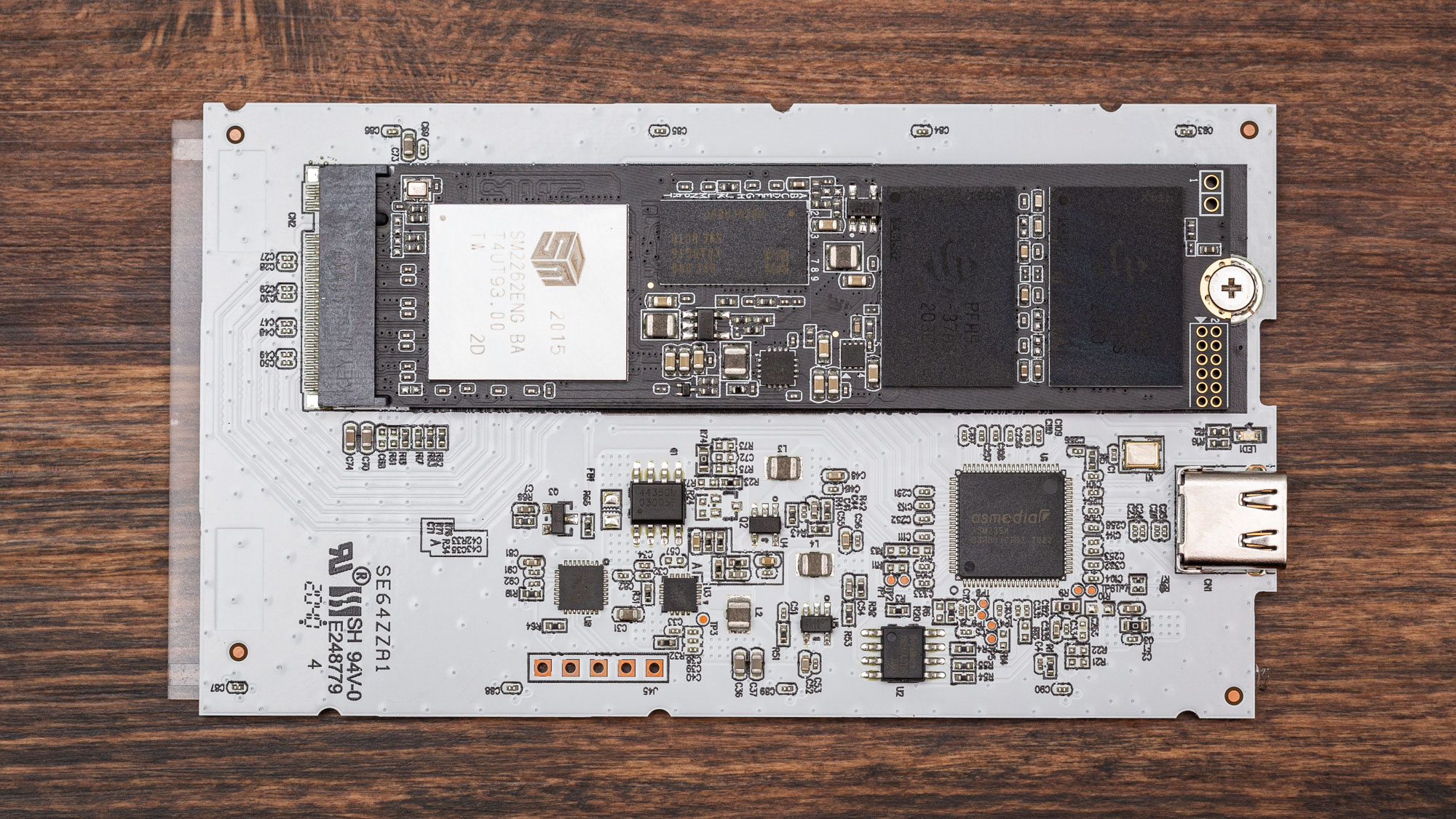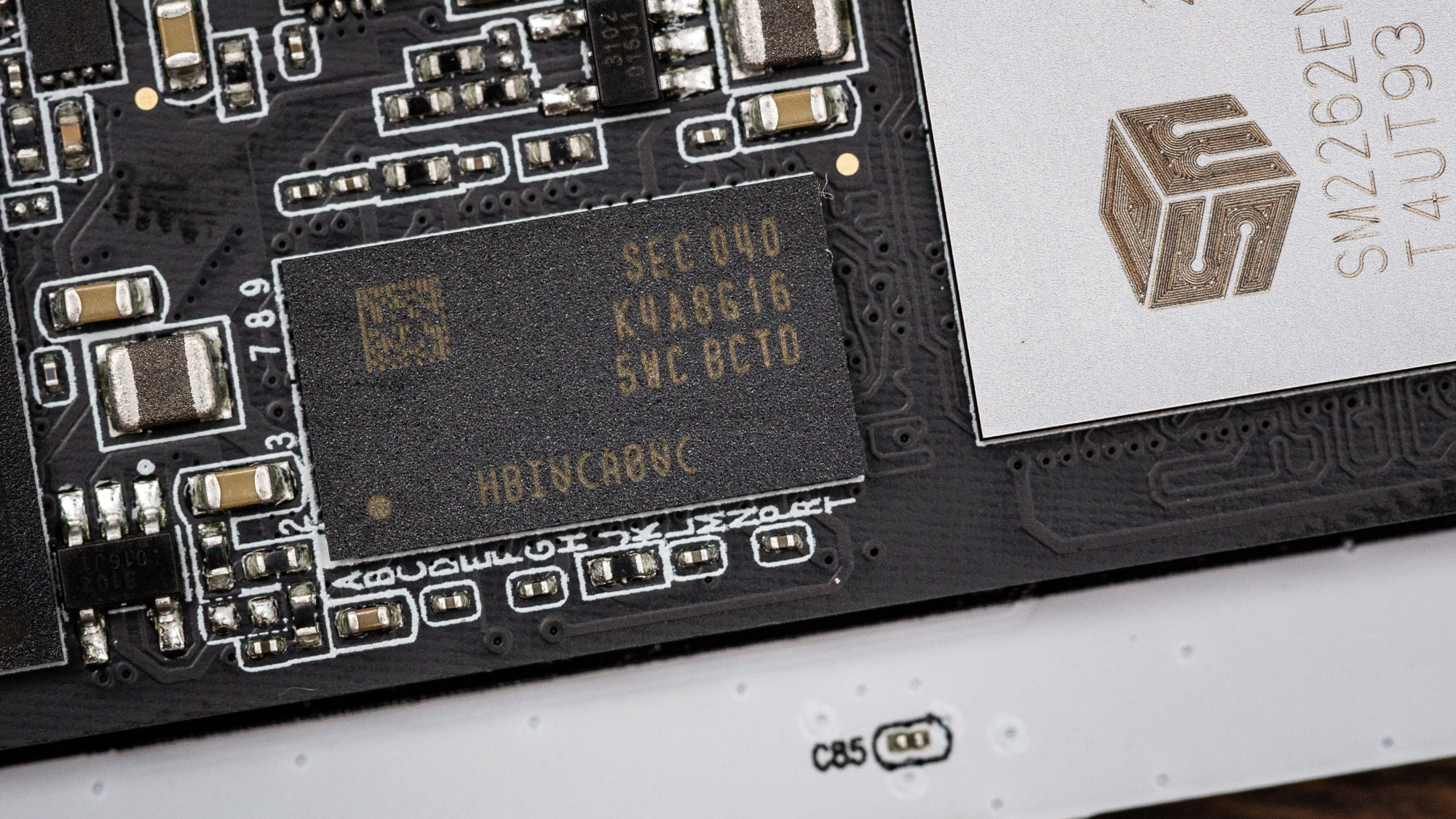Tom's Hardware Verdict
Adata SE900G is a speedy USB 3.2 Gen 2x2 portable SSD that features a dazzling RGB design but lacks the features and warranty support that we see with other SSDs.
Pros
- +
+ Competitive performance
- +
+ Stylish RGB lighting
- +
+ Competitive pricing
Cons
- -
3-year warranty
- -
Lacks AES 256-bit encryption
- -
Lacks IP rating
- -
RGB lights aren't controllable
Why you can trust Tom's Hardware
RGB has made its way into everything these days: fans, cases, PSUs, motherboards, GPUs, RAM, and even M.2 and SATA internal SSDs. Now we can add portable SSDs to the list, too. Adata’s new SE900G is a speedy portable USB 3.2 Gen 2x2 SSD that is also quite the show stopper with its stylish and hypnotizing RGB shine.
The SE900G also comes with plenty of horsepower under the hood in the form of an M.2 SSD that is very similar to the company’s controversial XPG SX8200 Pro NVMe SSD. Like the SX8200 Pro, Adata says that the components inside this SSD can change with newer revisions. Adata guarantees that the drive will meet its performance and endurance specifications regardless of the chosen internal componentry.
Paired with a fast USB 20 Gbps interface, the SE900 flies past its 10 Gbps competition and comes with reasonable pricing, making it a great value for those looking for a flashy portable SSD.
Specifications
| Product | SE900G 500GB | SE900G 1TB | SE900G 2TB |
|---|---|---|---|
| Pricing | $99.99 | $159.99 | $289.99 |
| Capacity (User / Raw) | 512GB / 512GB | 1024GB / 1024GB | 2048GB / 2048GB |
| Interface / Protocol | USB-C / USB 3.2 Gen 2x2 | USB-C / USB 3.2 Gen 2x2 | USB-C / USB 3.2 Gen 2x2 |
| Included | USB Type-C & USB Type-C to USB Type-A | USB Type-C & USB Type-C to USB Type-A | USB Type-C & USB Type-C to USB Type-A |
| Sequential Read | 2,000 MBps | 2,000 MBps | 2,000 MBps |
| Sequential Write | 2,000 MBps | 2,000 MBps | 2,000 MBps |
| Interface Controller | ASMedia ASM2364 | ASMedia ASM2364 | ASMedia ASM2364 |
| NAND Controller | SM2262EN | SM2262EN | SM2262EN |
| DRAM | DDR4 | DDR4 | DDR4 |
| Storage Media | Micron 96L TLC | Micron 96L TLC | Micron 96L TLC |
| Power | Bus-powered | Bus-powered | Bus-powered |
| Dimensions (L x W x H) | 110.8 x 66 x 16.5mm | 110.8 x 66 x 16.5mm | 110.8 x 66 x 16.5mm |
| Weight | 160g | 160g | 160g |
| Part Number | ASE900G-512GU32G2-CBK | ASE900G-1TU32G2-CBK | ASE900G-2TU32G2-CBK |
| Warranty | 3-Years | 3-Years | 3-Years |
Adata’s SE900G is available in three capacities of 500GB, 1TB, and 2TB at reasonable pricing, given its sequential performance ratings of up to 2,000 MBps of read/write throughput.
Our 2TB sample carries the lowest price-per-GB of the lineup. At $0.14 per gigabyte, it undercuts many USB 20Gbps SSDs on the market and even USB 10Gbps SSDs like SanDisk’s Extreme v2. Unfortunately, Adata only backs the SE900G with a basic three-year warranty rather than the five-year warranty we typically see with most enthusiast-grade storage.
The SE900G also doesn’t feature an Ingress Protection rating like our best external SSDs, nor does it come with AES 256-bit hardware encryption support to keep your data secure. The SE900G does come with the standard support for S.M.A.R.T. data reporting, UASP, and Trim, though.
Accessories
The SE900G comes with two USB cables — one 11.5-inch long USB Type-C cable for newer systems, and another USB Type-C to Type-A for compatibility with older ones.
A Closer Look


The SE900G is reasonably sized at 110.8 x 66 x 16.5mm, and it also has some heft to it. At 160 grams, the SE900G weighs two to three times more than many competing 5 Gbps and 10 Gbps portable SSDs. However, most of those drives also don’t run as fast as the SE900G and thus don’t need such robust thermal consideration. Adata’s SE900G features a large vented metal, heatsink-like back housing to provide adequate thermal dissipation under heavy use and provide some drop protection for the internals.


A black and clear plastic panel covers the top of the SSD, allowing the RGB lights to shine through. The RGB lighting also doubles as a power indicator, and there’s also an indicator light next to the USB Type-C port.
A white PCB with eight LEDs resides under the top panel and provides the light show. Unfortunately, you cannot control the lights. This PCB also contains the ASMedia ASM2364 USB 3.2 Gen 2x2 to PCIe 3.0 x4 NVMe bridge chip, M.2 slot, and supporting circuitry.
Get Tom's Hardware's best news and in-depth reviews, straight to your inbox.


At the heart of the SSD is a drive very similar to the XPG SX8200 Pro — this variant is powered by Silicon Motion’s very responsive SM2262EN PCIe 3.0 x4 NVMe 1.3 SSD controller. This controller is a high-end eight-channel, DRAM-based design that leverages dual Arm Cortex R5 CPUs clocked at 625 MHz. This controller interfaces with 2GB of Samsung DDR4 DRAM at a clock speed of 700 MHz.



Our SE900G sample also shipped with Micron’s 512Gb B27A 96L TLC NAND flash. There are 32 dies distributed into the four NAND packages and interface with the controller at speeds of 650 MTps. Each die has a quad-plane architecture, meaning the controller can achieve even higher levels of parallelism than dual-plane flash, which equates to faster performance. It even features subdivisions of tile groupings for faster and more efficient random reads over competing flash, such as BiCS4.
The tiles are redundant latches grouped for small I/O (4K), while BiCS4 has other means such as SBL (shielded-bitline) current sense as opposed to ABL (all bitline) current sense. Also, unlike BiCS4, Micron’s 96L TLC takes advantage of the CuA (Circuitry Under the Array) architecture where the NAND cell arrays are placed on top of the periphery circuitry (decoders, sense amplifiers, timing circuitry, buffers, etc.) to help shrink the die as well as enable the use of the company’s unique tile grouping. Additionally, Micron claims its floating gate design gives it some inherent data retention benefit over competing charge trap flash, too.
It’s noteworthy that while these internal components came inside our review sample, Adata may change the DRAM, NAND, SSD controller, and/or bridge chip at any point in the production cycle for this drive. That means the components can vary over time. Adata guarantees that the drive will meet its performance and endurance specifications regardless of the chosen internal componentry.
MORE: Best SSDs
MORE: How We Test HDDs And SSDs
MORE: All SSD Content

Sean is a Contributing Editor at Tom’s Hardware US, covering storage hardware.
